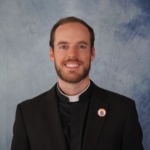
Breaking news: Pope Leo XIV is naming St. John Henry Newman the next Doctor of the Church!
Why will Newman be named a Doctor of the Church? Simply put, because of his incredible contribution to the field of theology.
Newman (1801-1890) was no ordinary Catholic. He was a convert from the Anglican Communion. His conversion cost him everything: he lost his job, he lost his relationship with his sister, he lost his friends, and he lost the influence he had on the minds of Anglicans throughout England.
Newman had been a famous theologian, much like Bishop Barron for American Catholics today. But he was Anglican . . . until he wasn’t!
What did he receive by becoming a Catholic? He received what he believed to be the one true faith, and for him, that was electric.
Newman pioneered what would become official Catholic teaching at Vatican II: the development of Christian doctrine. His understanding of development forced him to leave the comforts of Anglicanism for the challenging life that awaited him as a Catholic. Without fear, he followed where God was leading him intellectually. And now we get to learn all about it.
That is why Newman is being named a Doctor of the Church: because he lived on the cutting edge of theology, no matter the cost. In fact, his alma mater, Oxford University, recognized his contribution to the field of theology by granting him an honorary doctorate degree. Now the Catholic Church is granting him an even greater honor.
When I started seminary around ten years ago, my biggest question was “why do we Catholics believe that Mary was immaculately conceived when it doesn’t say that in my Bible?” I assumed that the Bible had to teach it; otherwise, why would the Church mandate it as a belief?
The problem was that I didn’t have a theological framework that extended beyond the Bible. In other words, my theological approach was more similar to the Protestant mindset of sola scriptura, or “Scripture alone,” than it was to the mindset of the Catholic Church. What I didn’t have was a teacher who could show me the ropes of the roots of Catholic theology.
Then came St. John Henry Newman. The crown jewel of Newman’s theological career is his great work, The Development of Christian Doctrine. In fact, it was what he discovered as he wrote this work that made him Catholic.
Newman acknowledged that he wasn’t setting out to prove all Catholic teachings. Instead, he wanted to show that there is a solid theological foundation for the development of Christian doctrines in general. Newman offers us this invaluable tool, which we can carry with us into whatever apologetical discussions we are engaged in. And now the Catholic Church offers it to us in an official way as well.
So how does it work?
Let’s return briefly to my initial example: the Immaculate Conception. Newman didn’t prove the Immaculate Conception using the Bible alone. Instead, he points us to Scripture to show that this doctrine was there in its rudiments from the very beginning (Gen. 3:15).
Newman loved to use images from nature. An apple tree and an apple seed are consistent, although they look very different from each other. Doctrines develop in a manner similar to how a seed becomes a tree, because, like an apple tree, doctrines are alive. Doctrinal developments look different from their seed form, but they are still consistent with them. An apple seed won’t become an orange tree, and if a doctrine were to lose its consistency with its seed form, it would become a corruption rather than a development.
Although the Immaculate Conception isn’t explicitly in Scripture, what is in Scripture is the development of doctrine!
First, according to Newman, Old Testament prophecies took time to develop. We have no evidence that anybody understood in ancient Judaism what God’s cryptic punishment of the devil meant in Genesis 3:15 in its fullness. God said, “I will put enmity between you and the woman, and between your seed and her seed; he shall bruise your head, and you shall bruise his heel.”
The fullness of Genesis 3:15 wouldn’t be understood until much later, when Christ was born of the woman, who, Newman taught, was the virgin Mary. Christ was the offspring cryptically referred to who crushed the head of the devil through his passion, death, resurrection, and ascension. The treasure of Genesis 3:15 was buried there from the beginning. This is an example of the development of a doctrine in Scripture.
Newman also points us to New Testament parables to show that doctrines develop. One of them is the parable of the mustard seed in Matthew 13:31-32.
Another parable he put before them, saying, “The kingdom of heaven is like a grain of mustard seed which a man took and sowed in his field; it is the smallest of all seeds, but when it has grown it is the greatest of shrubs and becomes a tree, so that the birds of the air come and make nests in its branches.”
For Newman, doctrines can be found early on in the Bible in seed form. The mistake I was making when I started seminary was that I was looking for a mustard tree when in reality all I was going to find was the mustard seed. Since I wasn’t looking for the right thing, I was missing the doctrine completely.
Newman asks if the apostles would have known all the theological developments that the Church and her theologians would work out in time. Newman says yes! But there is a caveat. What they wouldn’t have known explicitly, they would have known implicitly. If I sat down with St. Peter and explained the doctrines of the Trinity or the Immaculate Conception with insights from the Church’s writings over the last 200 years, Peter would agree with all of it, even if he couldn’t verbalize it himself.
The clincher for Newman’s insight is that the doctrines found in the Bible didn’t stop developing after Jesus’ ascension. Instead, we find Peter wrestling with the fact that he is supposed to baptize Gentiles, even though Jesus never taught him to do it. Newman wrote,
If we turn our attention to the beginnings of apostolic teaching after [Jesus’] ascension, we shall find ourselves unable to fix a historical point at which the growth of doctrine ceased, and the rule of faith was once for all settled (155).
Therefore, doctrines developed then, and they will continue to develop now. Newman reveals that the Protestant doctrine of sola scripture isn’t biblical.
Above, I gave you a key insight from Newman the theologian. But he likely isn’t going to be named a Doctor of the Church for this insight alone.
Newman also offers us a deep insight into the human conscience. In fact, he wrote that conscience can help prove God’s existence. He also wrote a number of works explaining theological conversion from various angles. First, his own autobiography, the Apologia Pro Vita Sua, documents his theological journey from Anglicanism to Catholicism. His work An Essay in Aid of a Grammar of Assent is a heavily philosophical work that explains intellectual conversion. And his novel Loss and Gain is about an Oxford student who converts to Catholicism.
Lastly, I have to mention that Newman is an amazing saint for Catholic Answers and its mission, because Newman himself was a controversialist and an apologist.
Today is an exciting day. The Catholic Church, through the leadership of Pope Francis and Pope Leo XIV, has decided to hand on St. John Henry Newman as a teacher of the universal Church.
It is rare to become the pope, but it is far rarer to be officially declared a Doctor of the Church. Newman will be the thirty-eighth person given this illustrious title in 2,000 years. May this day mark the start of a new and fresh insight into Catholicism for the world.



